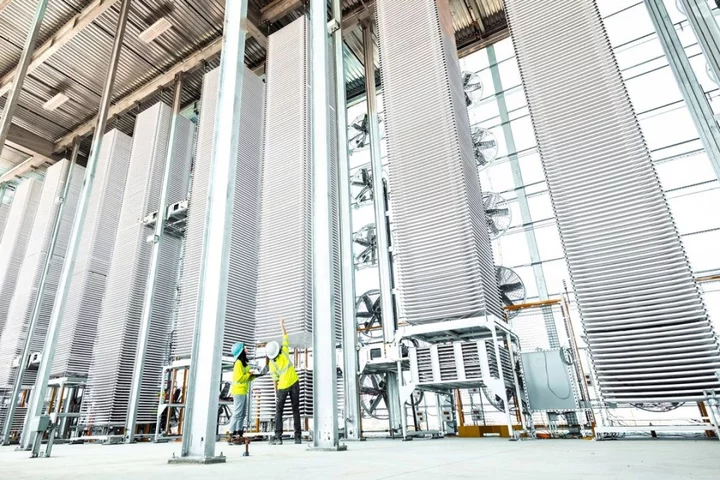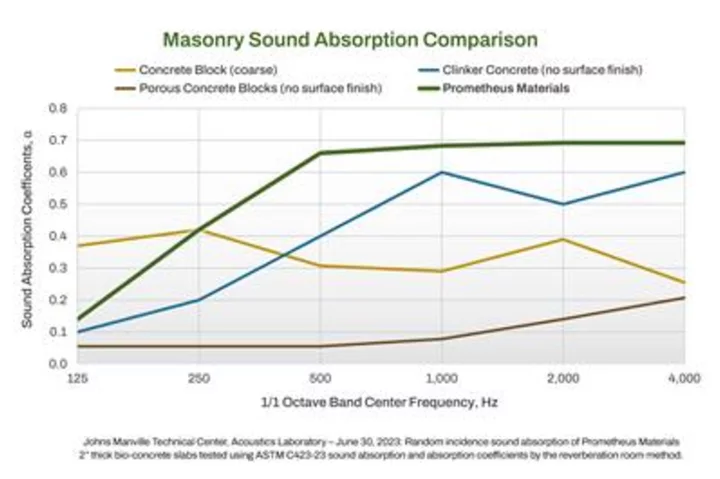The first ever commercial-scale carbon capture facility has begun operations in the US, marking a significant milestone towards meeting cleaner climate targets. San Francisco-based startup Heirloom Carbon Technologies opened the carbon removal plant in Tracy, California, on Thursday, claiming it will be able to capture 1,000 metric tons per year of CO2. The renewable energy-powered plant leverages the natural power of limestone to remove CO2 from the atmosphere. “Rocks are some of the planet’s most vital carbon sinks. Over geological timescales, CO2 from the atmosphere binds to minerals and permanently turns to rock - a process known as carbon mineralisation,” Heirloom notes on its website. “Limestone is one of the most abundant rocks on the planet, capturing massive amounts of CO2 from the air over years, Heirloom’s technology accelerates this natural process to just days.” The process works by placing hundreds of trays of calcium oxide powder onto 12-metre-tall racks, which turns into limestone as it comes into contact with CO2 from the atmosphere. Workers then heat up the limestone, which releases the carbon dioxide and turns it back into calcium oxide that can be reused to capture more CO2. The atmospheric CO2 that is captured through the facility is permanently sequestered in concrete through a partnership between Heirloom and CarbonCure Technologies. Heirloom aims to remove 1 billion tons of CO2 from the atmosphere by 2035 using its Direct Air Capture technology, with funding coming from companies buying carbon removal credits in order to offset their own emissions. It is not the first company to achieve direct carbon capture from the atmosphere, but Heirloom claims to be the first in the US. Switzerland-based startup Climeworks AG has commercial facilities in Switzerland and Iceland, which are capable of removing 4,000 metric tons of CO2 each year. Carbon capture technologies have faced criticism for the large amounts of energy and resources they require to operate, though some scientists claim they will be a vital part of keeping global net emissions below zero by 2050. In response to criticism from green groups in 2021 claiming that such projects are a costly distraction, Professor Stuart Haszeldine from Edinburgh University said: “Carbon capture and storage is going to be the only effective way we have in the short term to prevent our steel industry, cement manufacture and many other processes from continuing to pour emissions into the atmosphere. “If we are to have any hope of keeping global temperature [increases] down below 2C then we desperately need to develop ways to capture and store carbon dioxide.” The US government announced in August that it would fund a $1.2 billion effort to develop and deploy carbon capture technologies, with Heirloom among the recipients. Major companies, including Microsoft, have already signed deals to purchase carbon removal credits from Heirloom. Read More Breakthrough solar system outperforms military-grade diesel generator Breakthrough solar system outperforms military-grade diesel generator Solar panel world record smashed with ‘miracle material’ Google issues three-week warning to Gmail account holders
The first ever commercial-scale carbon capture facility has begun operations in the US, marking a significant milestone towards meeting cleaner climate targets.
San Francisco-based startup Heirloom Carbon Technologies opened the carbon removal plant in Tracy, California, on Thursday, claiming it will be able to capture 1,000 metric tons per year of CO2.
The renewable energy-powered plant leverages the natural power of limestone to remove CO2 from the atmosphere.
“Rocks are some of the planet’s most vital carbon sinks. Over geological timescales, CO2 from the atmosphere binds to minerals and permanently turns to rock - a process known as carbon mineralisation,” Heirloom notes on its website.
“Limestone is one of the most abundant rocks on the planet, capturing massive amounts of CO2 from the air over years, Heirloom’s technology accelerates this natural process to just days.”
The process works by placing hundreds of trays of calcium oxide powder onto 12-metre-tall racks, which turns into limestone as it comes into contact with CO2 from the atmosphere.
Workers then heat up the limestone, which releases the carbon dioxide and turns it back into calcium oxide that can be reused to capture more CO2.
The atmospheric CO2 that is captured through the facility is permanently sequestered in concrete through a partnership between Heirloom and CarbonCure Technologies.
Heirloom aims to remove 1 billion tons of CO2 from the atmosphere by 2035 using its Direct Air Capture technology, with funding coming from companies buying carbon removal credits in order to offset their own emissions.
It is not the first company to achieve direct carbon capture from the atmosphere, but Heirloom claims to be the first in the US.
Switzerland-based startup Climeworks AG has commercial facilities in Switzerland and Iceland, which are capable of removing 4,000 metric tons of CO2 each year.
Carbon capture technologies have faced criticism for the large amounts of energy and resources they require to operate, though some scientists claim they will be a vital part of keeping global net emissions below zero by 2050.
In response to criticism from green groups in 2021 claiming that such projects are a costly distraction, Professor Stuart Haszeldine from Edinburgh University said: “Carbon capture and storage is going to be the only effective way we have in the short term to prevent our steel industry, cement manufacture and many other processes from continuing to pour emissions into the atmosphere.
“If we are to have any hope of keeping global temperature [increases] down below 2C then we desperately need to develop ways to capture and store carbon dioxide.”
The US government announced in August that it would fund a $1.2 billion effort to develop and deploy carbon capture technologies, with Heirloom among the recipients.
Major companies, including Microsoft, have already signed deals to purchase carbon removal credits from Heirloom.
Read More
Breakthrough solar system outperforms military-grade diesel generator
Breakthrough solar system outperforms military-grade diesel generator
Solar panel world record smashed with ‘miracle material’
Google issues three-week warning to Gmail account holders









